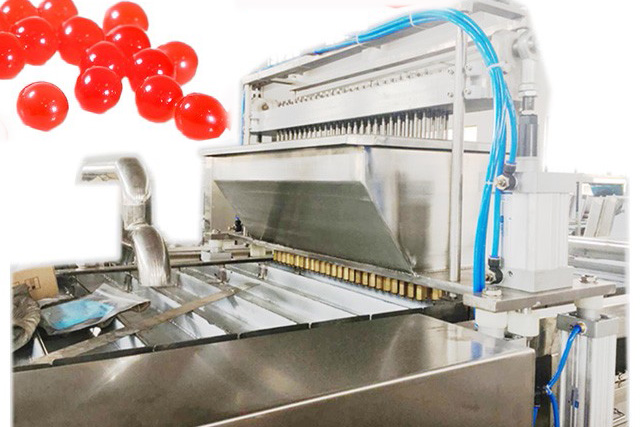An iconic movie line is from 1994's "Forrest Gump," when the guileless protagonist offers candy to a woman on a bus bench, telling her, "My mama always said, 'Life was like a box of chocolates. You never know what you're gonna get.' "
Mrs. Gump apparently never explained chocolate stringing to Forrest, but no point in blaming her as most of us don't know that the squiggles on top of our chocolates are the code to what's inside. candy pulling machine

Don't like raspberry filling? Stay away from the abstract R. Dig strawberry? Find an S and bite in (it can sort of look like a J, so get to know your codes).
The strings are drawn when the chocolate is wet, either from hand-dipping or going through an enrober at Dinstuhl's, one of the oldest candy companies in the country and among a handful that still hand-dip and hand-string today.
"You tap your finger on it and pull the chocolate to make the design," said Dinstuhl's President Rebecca Dinstuhl. "Each dipper has a different handwriting, and we can tell who dipped it by their signature."
Determining where the practice started isn't as easy as it sounds, but Dinstuhl believes it was in Europe, and her son, Andrew Dinstuhl, recalls seeing an old video of women in a chocolate factory in the 1940s stringing chocolates as they made them.
It seems likely that at some point, the codes were universal, but as more filling flavors came in fashion, candy makers started to make their own codes. Dinstuhl's and the now-closed Saxon's, Rebecca's family candy company, have always used the same strings within the company.
If you get a box of chocolates on Valentine's Day, there's no reason to resort to the old finger poke to see if a piece is filled with coconut cream. Here's what to know about the strings used by the local candy maker, which started making chocolates in 1902.
First, look at the shape of the candy. A square candy either contains coconut, fudge, marshmallow, nougat or peanut butter, though that one is a slightly smaller square. The coconut — and this is the cream only, as a toasted coconut is a different thing — has a double-beaded string across it. The nougat has an N, there's an abstract P on the peanut butter, a circle on the marshmallow, a line across the middle on the fudge, and a diagonal line on the caramel.
"As far as I know, the only remaining universal symbol is the one for caramel," Andrew said. "I always explain it like this when we give tours. I ask people if they know why we do it, and they say because it looks pretty. I tell them that once you cover something in chocolate, there's no way to tell what it is, so we make it easy. L is for lemon, R is for raspberry."
He believes the practice started for decoration, though.
"When you hand-dip chocolate, there's always a string of chocolate from the candy to the hand, so people would just make a design. I guess eventually someone figured out it could be practical, too," he said.
Creams are round and the code is simple enough: V for vanilla cream, M for maple cream, O for orange cream, B for buttercream. A marzipan cream has an almond nestled in it; mocha creams have chocolate sprinkles on the top. So OK, maybe that last one isn't so easy to decipher, but once you've cracked the code, you'll have it down forever.
Of course, large manufacturers such as Russell Stover and Whitman's include a printed code in the box, but these are not handmade chocolates (though they once were small, family-owned companies like Dinstuhl's, Rebecca said). European chocolatiers such as Godiva use molds that might contain an identifying mark. Local candy maker Phillip Ashley Chocolates features all handmade (and beautiful) chocolates, but his are hand-painted and poured, not dipped and strung. A spot check of well-known handmade chocolate companies around the country shows that hand stringing is largely a lost art. Many use transfer sheets to apply a design to the candy that designates what's inside, or a machine stringer that applies a design as the chocolates roll out of the enrober.
Nuts are a whole 'nother story and are obviously nuts. Toasted coconut has a distinct bumpy top that gives it away. Cherries tend to be wrapped in foil to keep the juice from leaking, but even if they're not, they're a distinctly shaped tall circle and not confused with a cream.

candy production machine And speaking of chocolate covered cherries ... They might've come first so we can thank them for being the vanguard for the big guns: Chocolate-covered strawberries are available at Dinstuhl's starting this week, and if you don't want to figure out the secrets in the squiggles, just don't. Pick up a pound and ponder, as you eat one, why life can't be more like a box of chocolates.